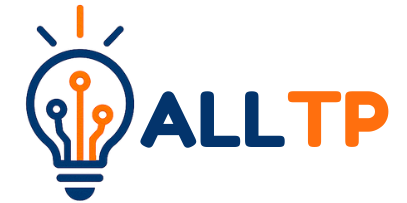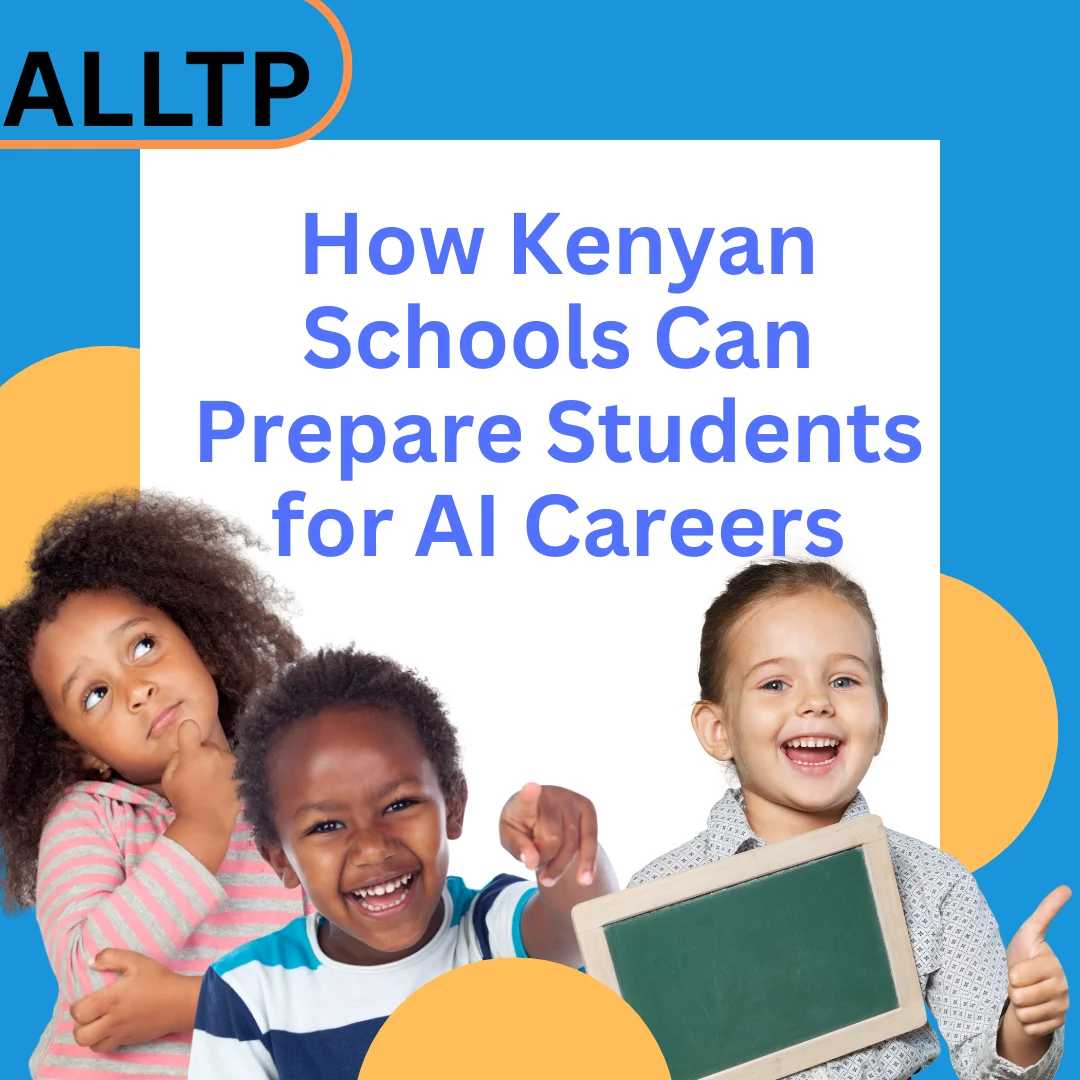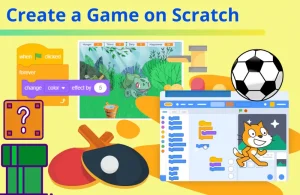Artificial Intelligence (AI) is reshaping industries across the globe, from automating healthcare systems and enhancing precision agriculture to powering financial technologies and personalizing education. What was once considered futuristic is now part of everyday life, driving innovation and efficiency in almost every sector.
In Kenya, the rapid adoption of digital technologies is creating new career opportunities that demand more than basic computer literacy. Today’s youth must understand how machines learn, how data drives decisions, and how technology can solve real-world problems. This makes AI education not just an advantage, but a necessity for students preparing to enter the 21st-century job market.
Initiatives such as All Things Programming are helping bridge this gap by empowering learners with practical coding, robotics, and digital problem-solving skills. Through hands-on learning experiences, students are introduced to computational thinking, a critical step toward understanding how AI works and how it can be used to improve communities.
Kenyan schools, therefore, hold the key to unlocking the nation’s potential in the global AI economy. By integrating digital literacy, coding, and innovation-driven learning into the curriculum, schools can nurture a generation of thinkers and creators ready to lead in the age of artificial intelligence.
Understanding AI and Its Relevance in Kenya
Artificial Intelligence (AI) refers to the ability of computers or machines to perform tasks that typically require human intelligence, such as recognizing speech, analyzing data, solving problems, or making decisions. In simpler terms, AI enables machines to “think” and “learn” from experience, allowing them to get better at tasks over time.
In Kenya, AI is already making a significant impact across various sectors. For example, in agriculture, AI-powered tools help farmers monitor crop health, predict weather patterns, and improve yields through precision farming. In healthcare, chatbots and diagnostic systems assist doctors in identifying diseases more accurately and efficiently.
Fintech companies like M-Pesa are integrating AI to detect fraud, personalize financial services, and improve customer experience. Even in transport, AI applications are helping manage Nairobi’s complex traffic systems through real-time data analysis.
The demand for professionals with AI-related skills is growing rapidly, both locally and globally. Companies are seeking individuals who understand data science, machine learning, and automation to help them stay competitive. According to global workforce reports, AI is among the top emerging career fields, with opportunities in software engineering, data analysis, robotics, and innovation management.
Kenya is also taking steps to prepare for this digital future. The government’s Digital Economy Blueprint emphasizes the importance of integrating technology into education and the economy. Partnerships between the private sector, universities, and innovation hubs, such as the Ajira Digital Program and Konza Technopolis, are creating pathways for young people to gain AI and digital skills. These initiatives signal Kenya’s commitment to becoming a leading hub for technological innovation in Africa.
The Current State of AI Education in Kenyan Schools
Kenya’s Competency-Based Curriculum (CBC) represents a major shift in the country’s education system, aiming to equip learners with practical skills that go beyond traditional academics. The curriculum emphasizes creativity, critical thinking, problem-solving, and digital literacy, all of which are foundational to understanding Artificial Intelligence.
Through subjects like computer studies and digital technology, students are introduced to coding, robotics, and data handling at an early age, laying the groundwork for future AI learning.
However, despite these promising goals, several challenges limit the full integration of AI education in schools. Many institutions, particularly in rural areas, still lack reliable internet access, computers, and electricity. Teachers often have limited training in emerging technologies, which affects their ability to deliver practical lessons on coding or digital problem-solving. Additionally, a few schools have structured programs that connect classroom learning to real-world technology applications.
To bridge these gaps, there is a growing need for policies and programs that strengthen digital infrastructure and teacher capacity. Early exposure to coding and computational thinking can help learners develop logical reasoning and creativity from a young age, essential traits for success in AI-related fields.
School leaders and educators can learn more about this transition in the article “Is Coding Part of the CBC Curriculum?, which explores how coding aligns with CBC objectives and national digital education goals.
Key Strategies for Preparing Students for AI Careers
Preparing Kenya’s learners for careers in Artificial Intelligence requires a deliberate, multi-layered approach that blends early education, teacher empowerment, and collaboration between schools, industries, and policymakers. The following strategies can help schools nurture the next generation of AI-ready talent:
a. Integrating AI Concepts Early
The foundation for AI learning should begin in primary school, where curiosity and creativity are strongest. By introducing coding, logic, and problem-solving at a young age, learners can develop the mindset needed to understand how technology works.
Using age-appropriate tools such as Scratch, Blockly, and simple robotics kits allows students to grasp complex concepts like automation and algorithms through play and experimentation. Early exposure ensures that by the time students reach secondary school, they already have a solid grasp of computational thinking and digital fluency.
b. Teacher Training and Curriculum Support
Teachers are central to integrating AI into the classroom. Schools and education authorities should invest in upskilling teachers through professional development programs focused on AI fundamentals, coding, and data literacy.
Partnerships with universities, teacher training colleges, and edtech organizations can help provide continuous learning resources and practical teaching aids. When educators are confident and well-equipped, they can inspire students to explore AI as both a subject and a career path.
c. Practical, Project-Based Learning
AI education becomes most effective when students apply what they learn to solve real-world problems. Schools can promote AI-focused clubs, hackathons, and innovation challenges that encourage creativity, teamwork, and design thinking.
For instance, learners might use data to improve local farming practices, optimize school resource management, or create simple chatbots for community use. Such project-based learning not only builds technical skills but also cultivates leadership, collaboration, and social responsibility.
d. Partnerships with Industry and Tech Hubs
Collaboration among schools, local tech startups, innovation hubs, and AI research centers can expose students to emerging technologies and real-world applications. Through mentorship programs, exposure visits, and internships, learners can interact with industry professionals and gain a better understanding of how AI is used in different fields. Online learning platforms and coding bootcamps can further enhance access to quality AI education and global opportunities.
e. Affordable and Inclusive Access
For AI education to thrive, it must be accessible to all learners, regardless of location or background. Schools can use low-cost digital tools, open-source software, and offline learning resources to ensure inclusivity.
Bridging the digital divide between urban and rural schools requires government support, community partnerships, and innovative solutions like solar-powered computer labs. More insights on this can be found in Affordable Coding Curriculum Tailored for Kenyan Schools, which explores practical ways to make tech education accessible to every learner.
Policy and Institutional Support
For Kenya to build an AI-ready generation, strong policy direction and institutional support are essential. The government, particularly through the Ministry of Education and the ICT Authority, plays a critical role in ensuring that AI education becomes an integral part of the national learning agenda. These institutions can help establish clear frameworks that promote digital literacy, teacher training, and the responsible use of technology in schools.
The Ministry of Education can champion the integration of AI and coding into the national curriculum by developing standardized learning frameworks that align with Kenya’s Competency-Based Curriculum (CBC).
Such frameworks would ensure that all schools, regardless of region or resources, follow a consistent path in building students’ digital and computational skills. Meanwhile, the ICT Authority can support these efforts through policy coordination, capacity building, and partnerships with tech organizations to supply schools with the necessary tools and connectivity.
Adequate funding and investment remain vital for sustaining these programs. The government and private sector can collaborate to create grants or sponsorships for schools that adopt AI learning initiatives, especially those in underserved areas. Incentives, such as awards, recognition, or additional funding, can motivate institutions to implement innovative, AI-based learning models.
By establishing strong policy foundations, Kenya can ensure that AI education is not a privilege for a few but a nationwide movement that empowers every learner to thrive in the digital economy.
The Role of Parents and Communities
While schools and government institutions play a central role in preparing students for AI-driven careers, parents and communities are equally important in shaping learners’ curiosity, confidence, and access to digital opportunities. Building an AI-ready generation requires support that extends beyond the classroom into the home and local community.
Parents can promote digital literacy at home by encouraging their children to explore educational technology, coding games, and problem-solving activities. Even simple steps such as providing access to learning apps, supervising online lessons, or discussing technology-related news, can spark interest and familiarity with digital tools.
When children see technology as a creative and empowering resource, they are more likely to pursue it with enthusiasm.
Communities also play a vital role in ensuring inclusivity. Encouraging girls and underrepresented students to participate in STEM and AI activities helps bridge the gender and social gap in technology education. Local mentorship programs, coding clubs, and innovation camps can provide safe spaces for all learners to explore their potential.
Moreover, community awareness programs can help demystify AI by showing parents and local leaders how technology can solve real problems, such as improving agriculture, healthcare, or small business management. By understanding the benefits of AI, communities become active partners in supporting schools, creating innovation hubs, and nurturing future innovators.
Ultimately, when parents and communities embrace digital education as a shared responsibility, they create an environment where every child can dream, learn, and lead in the AI-powered future.
Future Outlook: Building an AI-Ready Generation
Kenya stands at the threshold of a technological revolution that could redefine its economic and social landscape. By preparing today’s learners for AI-driven careers, the country is investing in a future marked by innovation, job creation, and global competitiveness.
As automation and digital transformation reshape industries, a workforce skilled in Artificial Intelligence will be crucial for driving productivity and sustaining growth across agriculture, healthcare, manufacturing, and finance.
In the long term, developing strong AI capabilities can position Kenya as a regional hub for technology and innovation in Africa. With its growing pool of tech-savvy youth, expanding internet infrastructure, and supportive digital policies, Kenya has the potential to lead in AI research, software development, and ethical innovation.
Collaborative partnerships among schools, universities, and industries can further accelerate this transformation, creating a talent pipeline that serves both local and global markets.
Ultimately, investing in AI education today is an investment in Kenya’s future prosperity. When students gain the skills to understand, create, and apply AI responsibly, they are not only improving their career prospects but also contributing to a smarter, more inclusive society.
By empowering young minds through education, Kenya can ensure that every child has the opportunity to thrive in an AI-powered world, turning potential into progress for generations to come.
To Conclude
Artificial Intelligence is no longer a distant concept, it is the engine driving modern economies and shaping the future of work. For Kenya to thrive in this new era, schools must take the lead in equipping students with the digital and creative skills needed to understand and apply AI responsibly.
From integrating coding and problem-solving in early education to investing in teacher training, infrastructure, and inclusive learning opportunities, every step counts toward building an AI-ready generation.
The path forward requires collaboration among educators, policymakers, parents, and communities. Teachers need the tools and training to bring AI to life in the classroom; policymakers must create supportive frameworks and funding opportunities; and parents should nurture curiosity and digital literacy at home.
By embracing AI education as a national development strategy, Kenya can empower its youth to become innovators, problem-solvers, and leaders in a rapidly evolving digital world. The time to act is now, so that the next generation not only adapts to technological change but helps shape it for a smarter and more equitable future.




